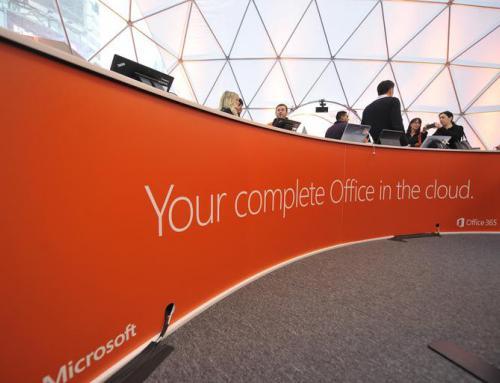Good priority management is all about being cristal clear on our purpose, being committed to our goals, knowing what commitments are already in our trusted inventory of current commitments (much more than a to-do list), and having a process to manage this with ease on a day-to-day basis. In the same way that our Inbox, Calendar, Tasks and Contacts must be purposeful, so too must our desk and physical work environment be.
I have been working with some Location Independent Workers recently who have exchanged the corporate cubicle for a home office almost all of whom squirmed with some discomfort when I asked these 2 questions:
- Is your desk top more akin to the purposeful flight deck of an aircraft carrier or a toxic waste dump?
- How happy would you be if your home office desk was transported back to the office right now – exactly as it is in this moment – and you, your boss and a major client were sitting around it making an important business decision?
It seems that many home-based workers allow themselves a different standard to desk top purpose than they would back in the corporate office! Naturally we have some proven approaches to help people recreate that purposeful flight deck to operate from, meanwhile here’s a copy of a resource that many clients have found useful. What would you add to it?
Here’s some top tips from Katherine Gibson <http://www.katherinegibson.com/index.html> , a best selling author of – among other books – Unclutter your life. I originally published this article in 2004 and it has been an inspiration for many clients since.
Katherine writes….
There was a time when my home office was chaos central. If I were in the midst of a major project, event plans and speeches littered the desk and tabletop and carpeted the floor. Reference books, half-a-dozen coffee cups, notepads, staplers, a radio, and stacks of compact disks lay jumbled among current and completed projects. New piles spawned with each new contract. I considered buying more shelf space, extra storage bins, and nifty organizers, but then I paused. I didn’t need more space. I needed less stuff.
Studies show that people who work in disorganized spaces spend up to eight hours a week looking for things or being distracted by them.
Efficiency drops and stress levels rise. Earnings are often hidden among misplaced invoices, receipts gone astray, customer billings yet to be mailed, and lost telephone messages from clients who want to do business.
The appearance of a workplace mirrors its priorities, affecting its professional image and levels of success. The ideal workplace should exude a positive, calm, and confident atmosphere that is congruent with who we are and what we want to achieve. While office clutter can affect the bottom line, it also affects our health. Working in a disorderly environment fractures our focus and creates stress, frustration, and anxiety. Headaches, stomach problems, and neck and shoulder strain seem more common to those who work in chaos. Subconsciously we resist working in a place that doesn’t feel comfortable.
A clear, uncluttered working space helps sharpen our focus. It makes a clear statement about us and what we can accomplish. Without distractions pulling us off task, and with the tools at hand our productivity will rise as our anxiety levels decrease. Instead of confusion, we’ll find efficiency—and the notes from yesterday’s meeting.
Clutter Busters
- Designate a time outside work hours to attack your office clutter. Follow up with shorter periods on a regular basis.
- Eliminate duplicate documents, brochures, and sales catalogues.
- Purge out-of-office-experiences such as postcards from faraway places, golf clubs, recipe books, and material for a dress you might sew one day.
- Reduce desk material. No one needs three staplers and dozens of pens.
- Cancel all but essential memberships, subscriptions, and credit cards.
- Give each item a logical home in a drawer or on a shelf— not on the floor, under the desk, or stacked on chairs.
- Attack files. Keep just those pertaining to recent and current projects. Others can be archived outside the office or shredded. I remove out-dated or duplicate papers each time I look at a file.
- Postponing decisions creates clutter. Resolve to deal with all outstanding issues immediately.
- Stay clutter-free. Take ten minutes each day to tidy and toss.
©2004 Katherine Gibson. Excerpted from, Unclutter Your Life:
Transforming Your Physical, Mental, and Emotional Space, Beyond Words Pub. 2004, Now available at your bookstore and thoroughly recommended.
For proven, measurable, productivity training and support just ask here



Wow, demarkation lines along the flight deck/desk.
That would certainly help and I can see some of my engineering readers thinking ‘Why Not?’ The challenge for many people is that a flat surface is just to convenient to build random piles upon!
I am including a wikipedia link ro the TPS and the 7 wastes here: http://en.wikipedia.org/wiki/Toyota_Production_System
If you could only provide one on-line source to outline this for interested readers what would it be?
Thanks Richard
That shamed me into doing something!
One tip I learned form my shop floor experience is to mark off areas of your desk with tape (ie electical tape) for certain things (ie PC, mousemat, in-tray,phone). It certainly stops the clutter developing and stops you putting something in the wrong place!
The other thing as you say is complete tasks when they come in and not “batch & queue”.
One of Toyota’s “Seven wastes”.
Who says engineers have OCD!!
Time for some refresh support I think JJ. You know that all invoices belong behind your ‘I’ tab in your temporary filing system so you can task yourself to pay ’em before penalties are due. That reminds me … Footie today, Come on England! Seriously though, if you want to touch base on the phone please do so
nice one Richard, now where will I put all my music mags, my catalogues, my post and – what’s this here? an invoice I forgot about!
Thanks Josie, it is funny how a pile here and a pile there can quickly become a clutter (even if it does have some ‘sense’ attached to it!). I find that being ruthless with the confetti at source helps me from being snowed under. Then having a trusted inventory of commitments which points me to the data source (paper and digital) helps me keep all the plates spinning.
Excellent advice Richard. I’m known for my “nesting” tendancies and regularly take a couple of hours to declutter. Your advice and Katherine’s call to action show that this needs to be a daily not a quarterly activity.